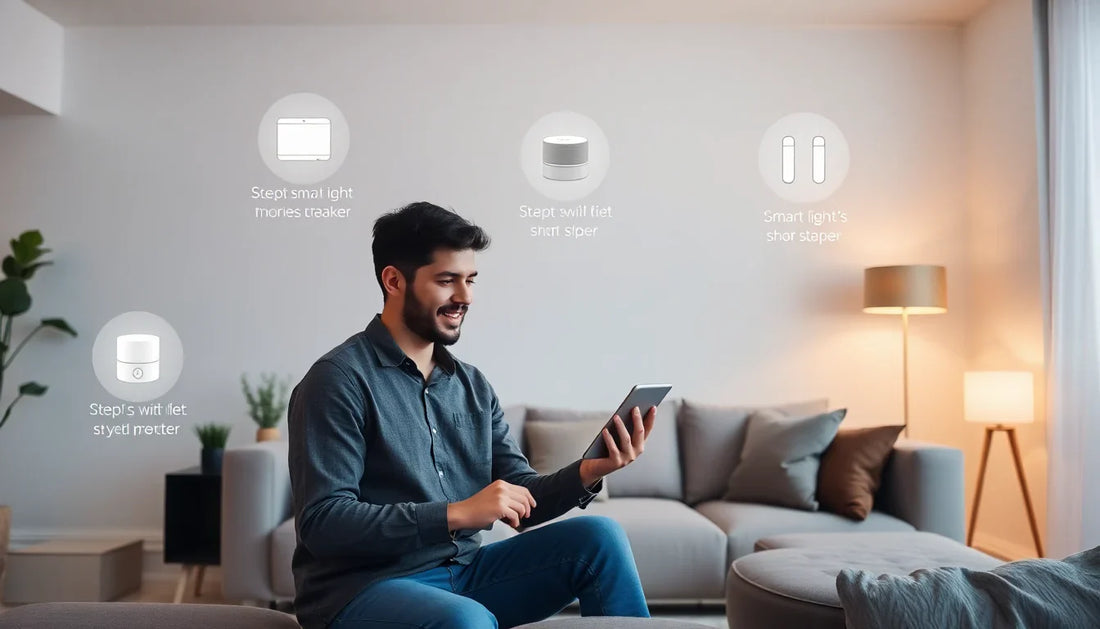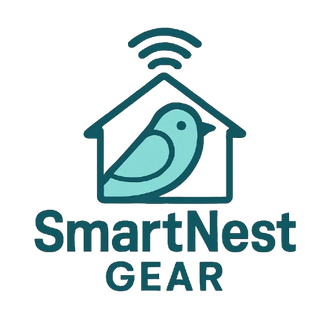
How to Set Up Your Smart Home in Under 30 Minutes
In today's fast-paced world, the idea of a smart home has become increasingly appealing. The ability to control various aspects of your living environment with the touch of a button or the sound of your voice can not only make your life more convenient but also more efficient. However, the thought of setting up a smart home can be daunting, with many people assuming it's a complex and time-consuming process.
At SmartNest Gear, we're here to dispel that myth and show you how you can transform your home into a cutting-edge, connected oasis in under 30 minutes. Whether you're a tech-savvy individual or someone who's just starting to explore the world of smart home technology, this guide will walk you through the steps to get your smart home up and running in no time.
Assess Your Needs
The first step in setting up your smart home is to assess your needs and determine which areas of your home you want to automate. Do you want to start with smart lighting, voice-controlled appliances, or a comprehensive security system? By identifying your priorities, you can create a roadmap that will help you make the most of your time and resources.
Smart Lighting
One of the most popular and accessible entry points into the smart home ecosystem is smart lighting. With a wide range of bulbs, switches, and dimmers available, you can easily integrate lighting control into your daily routine. From setting the perfect ambiance for movie night to automating your lights to turn on and off based on your schedule, smart lighting can make a significant impact on your home's energy efficiency and overall comfort.
Voice-Controlled Appliances
Another area of smart home technology that has gained significant traction is voice-controlled appliances. With the rise of virtual assistants like Alexa and Google Assistant, you can now control everything from your thermostat to your coffee maker with simple voice commands. This not only adds a layer of convenience to your daily life but also allows you to optimize your home's energy usage and reduce your carbon footprint.
Home Security
Ensuring the safety and security of your home is a top priority for many homeowners. Smart home technology has revolutionized the way we approach home security, with advanced systems that offer features like motion detection, remote monitoring, and even facial recognition. By integrating these systems into your smart home setup, you can enjoy peace of mind and the ability to keep a watchful eye on your property, even when you're away.
Choose Your Smart Home Ecosystem
Once you've identified your primary needs, it's time to choose the smart home ecosystem that best fits your lifestyle and budget. While there are several leading platforms to choose from, such as Amazon's Alexa, Google Home, and Apple's HomeKit, the key is to select a system that offers the features and compatibility you require.
Amazon Alexa
Amazon's Alexa is one of the most widely adopted smart home platforms, offering a vast array of compatible devices and a user-friendly voice control interface. With Alexa, you can easily control your smart home, play music, set reminders, and even order products from Amazon with just a few spoken commands.
Google Home
Google Home, powered by the Google Assistant, is another popular smart home ecosystem that boasts impressive natural language processing capabilities. In addition to voice control, Google Home also integrates seamlessly with a wide range of smart home devices, making it a great choice for those who are already invested in the Google ecosystem.
Apple HomeKit
For Apple enthusiasts, the HomeKit platform offers a secure and streamlined smart home experience. With its tight integration with iOS devices and Siri voice control, HomeKit provides a cohesive and intuitive way to manage your smart home, especially if you're already using other Apple products in your daily life.
Set Up Your Smart Home Devices
Now that you've chosen your smart home ecosystem, it's time to start setting up your devices. This process can vary depending on the specific products you've selected, but in general, it involves the following steps:
-
Unbox and connect your devices: Carefully unpack your smart home devices and follow the manufacturer's instructions to connect them to your home's Wi-Fi network.
-
Download the necessary apps: Most smart home devices will require you to download a companion app to your smartphone or tablet. These apps will guide you through the setup process and allow you to control your devices remotely.
-
Integrate with your chosen ecosystem: Once your devices are connected, you'll need to integrate them with your smart home platform of choice. This may involve linking your accounts, pairing devices, or enabling specific skills or actions.
-
Customize your settings: Take the time to customize your smart home settings to your liking. This could include adjusting lighting schedules, setting temperature preferences, or configuring security alerts.
-
Test and troubleshoot: After setting up your devices, be sure to test them thoroughly to ensure everything is working as expected. If you encounter any issues, refer to the manufacturer's troubleshooting guides or reach out to their customer support team for assistance.
Automate and Optimize
One of the true powers of a smart home lies in its ability to automate and optimize various aspects of your living environment. By leveraging the capabilities of your smart home devices and the integrations with your chosen ecosystem, you can create a seamless and efficient living experience.
Automation
Automation is the key to unlocking the full potential of your smart home. By setting up routines, schedules, and triggers, you can automate tasks like turning on your lights, adjusting your thermostat, and even starting your coffee maker in the morning. This not only saves you time and effort but also helps to reduce your energy consumption and carbon footprint.
Optimization
In addition to automation, smart home technology also allows you to optimize your home's performance. By monitoring energy usage, adjusting temperature settings, and receiving alerts for potential issues, you can ensure that your home is running as efficiently as possible, ultimately saving you money on your utility bills.
Expand and Enhance
As you become more comfortable with your smart home setup, you can start to explore ways to expand and enhance your system. This could involve adding new devices, integrating with additional platforms, or exploring more advanced features and automations.
Integrating with Other Platforms
One of the benefits of a smart home is the ability to integrate with a wide range of platforms and services. For example, you could connect your smart home to your home security system, your home entertainment system, or even your vehicle, creating a truly interconnected living experience.
Exploring Advanced Features
As smart home technology continues to evolve, new and more advanced features are constantly being introduced. From machine learning-powered automation to voice-controlled routines, there's always something new to discover and implement in your smart home setup.
Conclusion
Setting up a smart home doesn't have to be a daunting task. By following the steps outlined in this guide, you can transform your living space into a cutting-edge, connected oasis in under 30 minutes. Whether you're starting with smart lighting, voice-controlled appliances, or a comprehensive security system, the key is to identify your needs, choose the right smart home ecosystem, and take the time to set up and customize your devices.
Remember, the true power of a smart home lies in its ability to automate and optimize your living environment, saving you time, money, and energy in the process. So why wait? Start your smart home journey today and experience the convenience, efficiency, and peace of mind that comes with living in a connected home.


